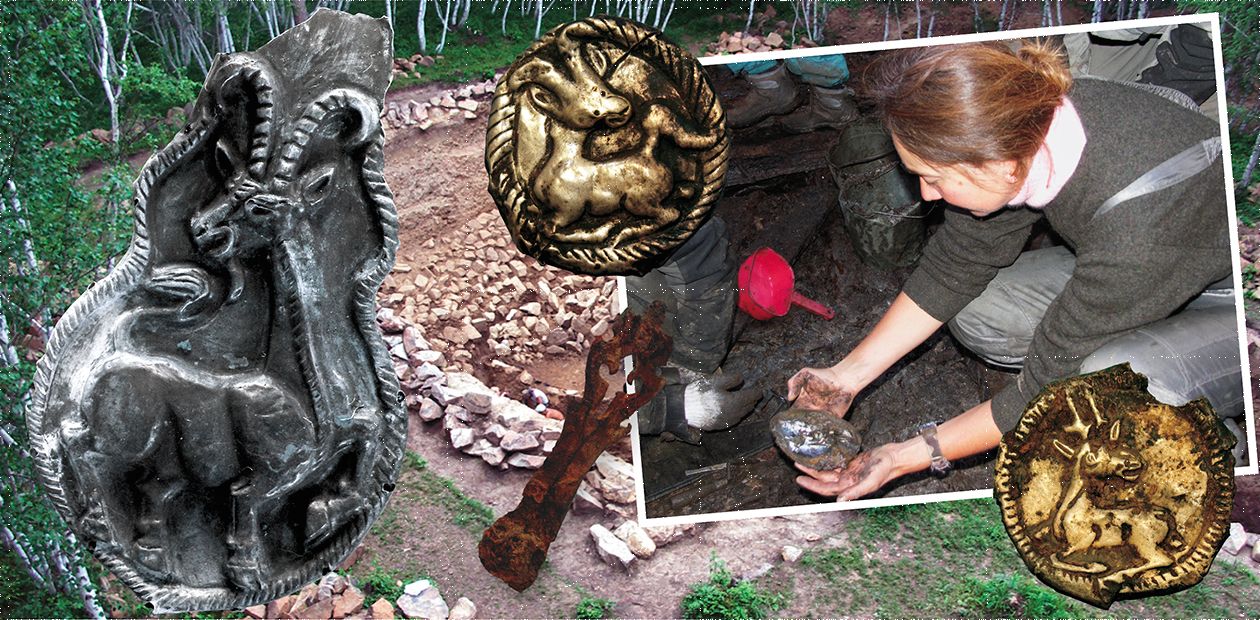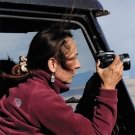The Past 18 Meters Deep
The ground has turned out to be very heavy: clay with pebbles and broken stones, often wet… Our excavation is a pit following the contours of an ancient grave. We use pails to lift the soil through the block. The sand walls keep crumbling away, which makes us do additional work. Four months of extremely hard, “fine” work are left behind; the minimum of six meters into the depth lies ahead. However, the excavation can by no means be put off till the next year …
We — an expedition of the Novosibirsk Institute of Archaeology and Ethnography of the Siberian Branch of the Russian Academy of Sciences — have come to the Noin Ula mountains, a picturesque place in Northern Mongolia, to excavate a Khunnu burial mound. Khunnu is a people who created the world’s first nomadic empire. They were mentioned in the Chinese chronicles but the Khunnu archaeological artefacts were not many.
Ancient burial places in the north of Mongolia were accidentally discovered as early as in 1912 by A. Ya. Ballod, a technician of a gold-mining company. Making a prospecting dig in a large pit overgrown with shrubs and old pines, he discovered ancient tools, golden goods, vessels, remains of silk materials, and many other things. This was how the Noin Ula burial mounds, which later became world-famous, were discovered. The Russian revolution, however, delayed their investigation by several decades.
A few desolate burial mounds were dug out in 1924—1925 by the expedition of P. K. Kozlov, a world-known traveler and scientist. This expedition established that burial mounds lost in secluded forest folds were graves of representatives of the highest Khunnu aristocracy. The results of these excavations were sensational: works of animalistic art unknown before, fabrics from the Mediterranean Sea coasts and Middle Asia, Chinese silks, felt carpets with applications in the “animal style” … These artefacts, well preserved owing to the severe climate and clay soils, held evidence not only about the Khunnu nomads, but also about their contemporaries, ancient Western and Eastern civilizations. In subsequent years, the archaeological investigations were continued by Mongolian and Hungarian archaeologists, but they were less successful.
We came to the Noin Ula 80 years after Kozlov’s expedition. The burial mound we chose had been robbed (or, rather, profaned) in ancient times — a large hole in the center testified to this. We planned to excavate the burial mound in one field season: we came to Mongolia at the end of May and intended to complete work in September.
The excavations were made jointly with the Mongolian Institute of Archaeology, and Mongolian students were the main workers at the burial mound. Their work was not easy at all: everything was done manually, and the only machines were wheelbarrows used to remove ground and stones. However, hand work is especially valued in archaeology, since this is the best way to detect all the features of a sepulchral construction and to obtain maximum information.
The burial mound had five stone covers, and each of them had to be carefully cleaned, described, and taken apart. First artefacts appeared only at the end of September: chariot parts were found at a depth of more than 11 m. We were hoping to see the sepulchral chamber itself in a short time, as it happened with other burial mounds. There was, however, a great surprise in store for us: no trace of a chamber either a meter or three meters deeper. It was probable that the ancient builders, having penetrated down to more than ten meters in a heavy clay ground and hit the sand, decided to reach the maximal depth (18 m — such was the depth of the Khunnu grave pit excavated by a French expedition in sand, using an earthmover).
It was the beginning of October, and frozen sand walls of the open pit thawed out during the day, filling the pit bottom with water… It was, however, impossible to “conserve” the excavation till the next year: the pit could not be preserved till next summer, so our four-month work would be wasted and the sepulcher would be ruined. We started scooping out the water with pails, and then with a pump, which quickly became clogged with suspended sand. At a depth of 16 m a large layer of coal was found: this meant that somewhere below there had been fires that scorched the burial chamber. And then our Mongolian colleagues, worried that the expedition lasted too long and the excavation went incredibly deep, demanded that the works be continued only after a crib of logs was constructed at the pit bottom to provide safety of the excavations.
It took us two days to construct a crib with a roof at the pit bottom and to turn on electric power from an engine. And there we were, standing on a pine cover of the ancient sepulchral construction — at a depth approximately equal to the height of a 6-storeyed house! In the center there was a small, less than a meter, hole through which the grave had been robbed. Under the multi-ton ground weight, the chamber has practically collapsed; however, all that was in it (except for a varnished coffin with a dead man, stolen in ancient times) remained in their places.
It grew colder. At night, water that flooded the sepulchral chamber floor turned into ice. We got to the most interesting part of our job: from the wet mash covering the felt carpet on the sepulchral chamber floor, we were extracting, photographing, and describing numerous objects that had accompanied the noble dead man into the world of the dead. There were precious varnished crockery and embroidered silk cloths, richly decorated horse harnesses, nephrite goods, gold adornments for clothes, fragments of woolen embroidered cloths, and seeds… It was the first time wood samples from the Khunnu sepulchral chamber were taken for dendrochronologic analysis.
Our expedition succeeded beyond all expectations, and the colossal work done in the burial mound was rewarded. Certainly all this could have ended differently. Fortunately, the results of our expedition confirmed the words of the famous Russian traveler N. M. Przhevalsky addressed to his colleagues more than a hundred years ago: “It is necessary to risk, and in this risk there lies considerable, perhaps, even the greatest, chance of success.”
Doctor of History N. V. Polosmak, Candidate of History E. S. Bogdanov; Institute of Archaeology and Ethnography, Siberian Branch of the Russian Academy of Sciences, Novosibirsk
Photos by courtesy of the authors
















